Conversation About Social Justice: Part 3
Here we present the third installment of our “Conversation About Social Justice.” Fellows have continued to respond to Madam Chairman of the MacDowell Board Nell Painter’s (16, 19) invitation to send us their “art of redress.” While we are hopeful for the future, the need for systemic change continues to call us to make a space to present art made in protest of previous and current injustices. We hope also that you view these pages as a place where an open exchange of ideas and dialogue continues around social justice matters, perhaps acting as a catalyst to more conversation and inspiration.
We’ll repeat here that this invitation to submit your art is made with the understanding that it may seem to impose yet another task on artists who may continue to protest in the streets or are emotionally drained. This understanding extends particularly but not exclusively to Black and Indigenous Fellows of Color, and to Fellow artists who have suffered personal losses.
We hope you find inspiration in these pages.
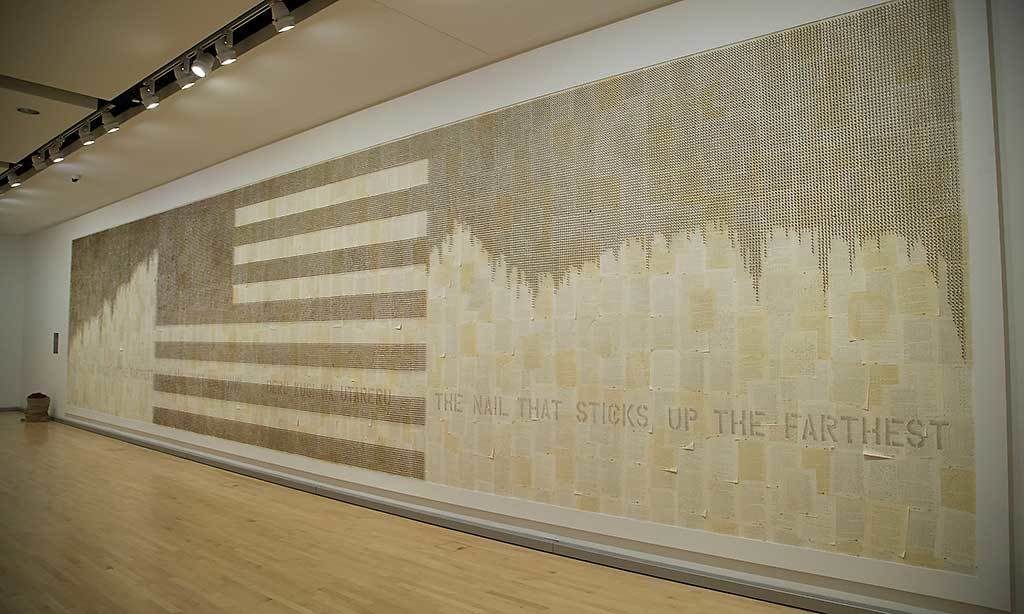
120,313 rusted nails, stained copies of archival documents (CWRIC testimony from the National Archives), family letters, burlap sacks, wood, paint; 12 ft. X 60 ft.; 2017; Kristine Aono (90), installation artist. Scroll down for more information.
Sources, Secrets, Redress
This essay/address was presented at the "Sources and Secrets" panel at CUNY Graduate Center in 2015. It outlines writer Marnie Mueller's (01) relationship with Mary Mon Toy, a Japanese American performer, whose struggles with identity and race led her to hide her Japanese heritage since living in a California internment camp at the outset of World War II.
Read Marnie's addressCan You
"Can You" by Mary Gilliland (95) was originally published in Hotel Amerika. Click here to read a PDF of Mary's poem.
Skin
American poet Willa Schneberg (86) submitted the poem "Skin" for the conversation.
Read Willa's "Skin"American Sampler
Three poems from Jane Duran's (00) 2014 collection American Sampler.
Read Jane's poemsRegister
This call to action on the occasion of the 2020 General Election is a poem and soundscape commissioned by the Rivers Institute and includes the voices of Fellows Ronaldo V. Wilson (17) and Terri Witek (05, 07).
.
Jus Suum: What Can Never Be Taken
The poem “Jus Suum” was published in 1997 and most recently appeared in How the Universe Is Made: Poems New & Selected 1985-2019 from Stephanie Strickland (81, 97).
Read Stephanie's poemThe Poem About Chuck E. Cheese a Friend Posted on Facebook
Poet and translator Taije Silverman (03, 14) submits a poem first published in The Gettysburg Review.
Read Taije's poemComposer Kevin Norton (02) offers a composition (below) written for a student:
Mouhamed Cisse was a student that I knew from the beautiful summer music camp in Maine: Camp Encore/Coda. Mouhamed’s life ended violently when he was shot to death near his home in West Philadelphia around midnight on June 1, 2020. The Encore/Coda community was stunned by the violent death of this young man that we had known for six summers. The camp community came together to hold a virtual (because of the Coronavirus shutdown) memorial service for Mouhamed and we (faculty, staff, fellow campers) were asked to contribute something to this service: a musical performance, a “speech,” etc. I thought about this A LOT. I was devastated by our beautiful student’s violent death AND that devastation was preceded by the cruel violent death of George Floyd (May 25, 2020). Many would say that these two deaths were unrelated, however, many others (including myself) would say that these deaths are related because of an unequal and unjust society. This performance or these thoughts are not meant to be viewed as definitive. I offer all of this as: 1) a meditation on a beautiful young man’s life; 2) some information for all listeners/readers to continue to consider the life of Mouhamed Cisse and all possible related tangents.
(2:195) Spend in the Way of Allah and do not cast yourselves into destruction with your own hands; and do good, for Allah loves those who do good.
For Mouhamed Cisse
The Missing Soul
Prophet or King
Waiting Room of Democracy
Waiting Room of Democracy (images below) is a speculative architectural project headed by Sergio Lopez-Pineiro (12).
As argued by Peter Sloterdijk in his article “Atmospheric Politics,” “democracy depends on the ability to lend a spatial dimension to things said one after the other; it therefore implies constant training in patience.” In order to become a citizen, then, one has to exercise the necessary patience to listen while others speak. If previous spatial types of democratic assembly have always been about getting together as a whole, this waiting room is a location where only two individuals are randomly paired up in order to speak and listen to each other.
Ideas and conceptions of the public realm have traditionally been based on an understanding that such consensus would emerge through rational discourses. The ability to listen to others, however, does not imply nor guarantee that society would be able to transcend its differences and achieve a consensus.
As other instances when people are asked to wait, this room places its soon-to-be-citizens in limbo: everything appears in a state of temporary suspension while two strangers patiently discuss what it might take for citizens to live with each other. As other waiting rooms, this room is not an end in itself. Although this waiting room can only exist within democratic realms, democracy does not happen here: it happens elsewhere through the action of citizens. Nevertheless, this waiting room is a necessary means for reestablishing the most essential quality for citizenship to continue to exist in times of instant gratification and simulation: the ability to wait and listen to others speak.
This room would be located in the Parc du Cinquantenaire in Brussels within the axial composition of power, meaning, and order that structures the center of Brussels. This axis connects the Triumphal Arc with its oversized Belgian flag, the headquarters of the European Union, and the Parc du Bruxelles, a former hunting ground next to the Royal Palace.
In the context of the Parc du Cinquantenaire, the Waiting Room of Democracy will appear as a pavilion that seems to seamlessly fit within the logics of the all too-familiar neo-classical French garden tradition. This tradition attempted to reconcile reason and pleasure through a geometric order of carefully shaped vegetation. Besides its formal similarities with this type of gardens, this room also looks similar to the usual immigration centers at international ports of entry surrounded by unending waiting lines. Despite the unjust and dramatic situations that take place at these ports, these tiring and frightening spaces coalesce people from all different backgrounds in ways that standard public spaces fail to. In many cultures, labyrinths have traditionally been associated with meditation practices. As spatial mechanisms constructed of a continuous path that folds onto itself and leads to nowhere, labyrinths place emphasis on the trajectory rather than on the destination and their experience is not unlike that of waiting rooms.
This Waiting Room of Democracy, then, appears as a ghost of other familiar spaces (the garden, the labyrinth, the immigration center) and, while it is also a physical real space, it emerges as a space in limbo that is simultaneously pleasurable, rational, frightening, tiring, reflective, and boring, a combination of emotions that is the basis of any democratic dialogue.
The project is part of the ongoing series "Typologies for Big Words."
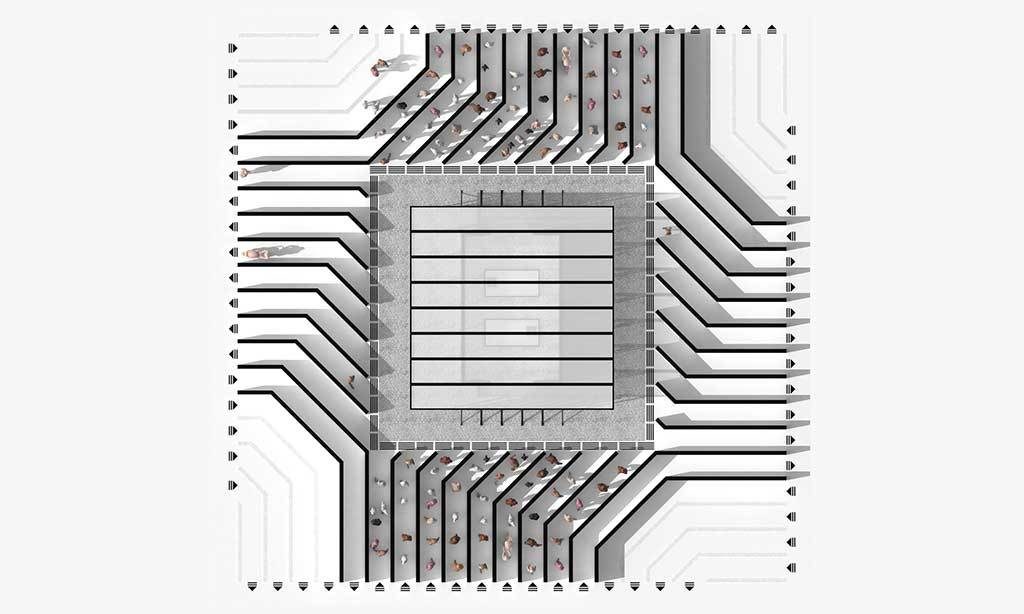
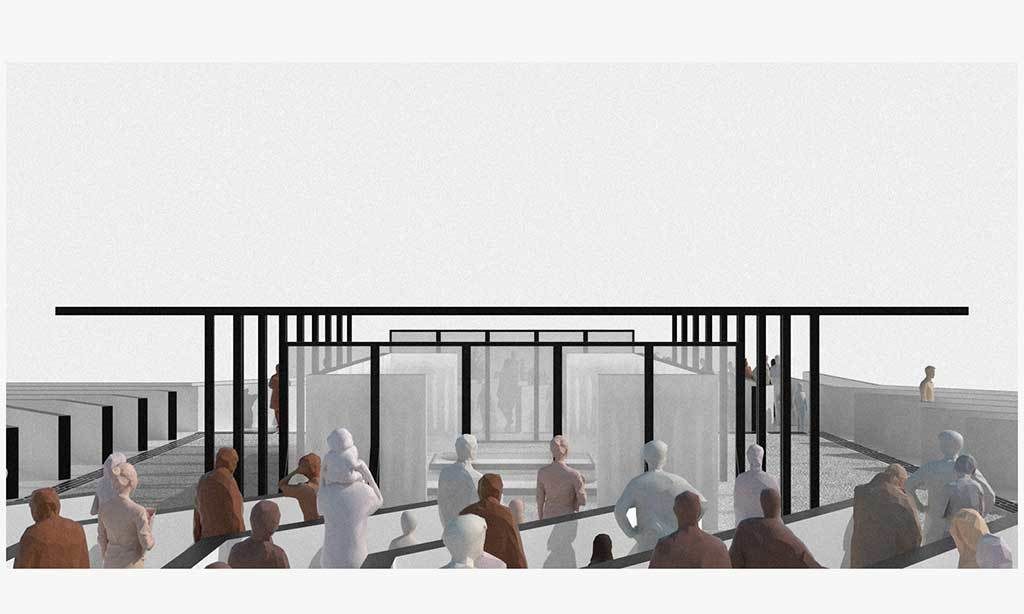
The Nail That Sticks up the Farthest...

120,313 rusted nails, stained copies of archival documents (CWRIC testimony from the National Archives), family letters, burlap sacks, wood, paint; 12 ft. X 60 ft.; 2017; Kristine Aono (90), installation artist. Exhibited at the Mary & Leigh Block Museum of Art, Evanston, IL as part of a group exhibition, If You Remember, I'll Remember, curated by Janet Dees.
Day of Remembrance at the Block
Swallow
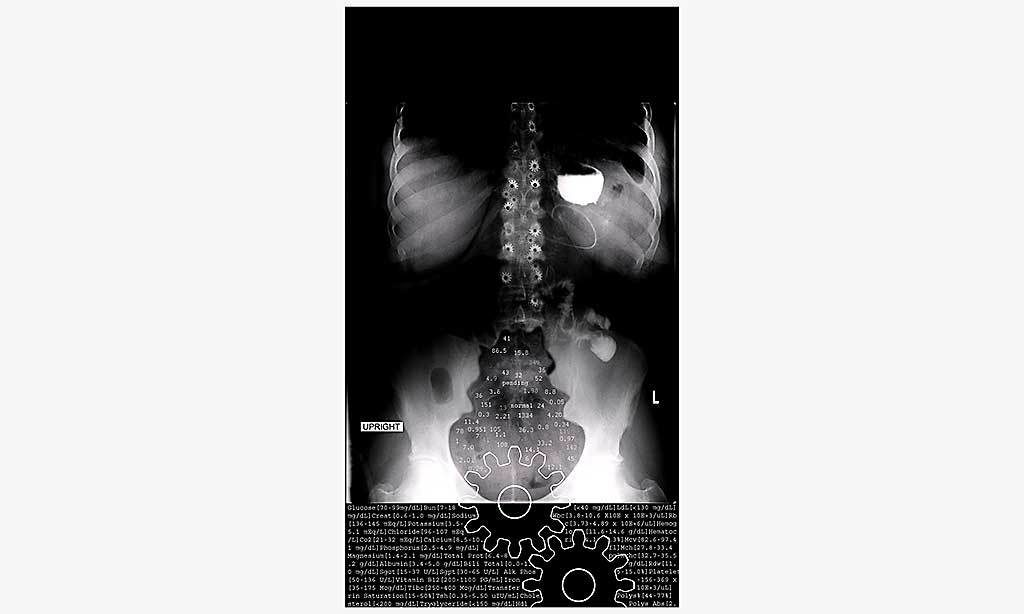
Swallow (detail)
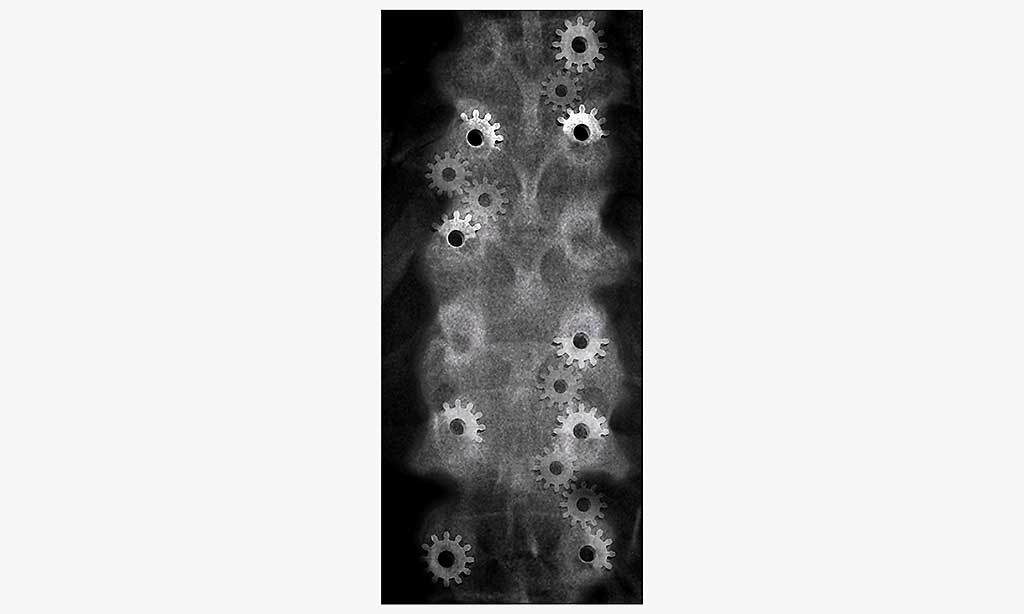
Digital inkjet prints on canvas; 50 in. X 90 in.; 2005-2006; Pamela Jennings (93), interdisciplinary artist; from the series “Sui Generis,” a series of self-portraits that locate the body as a fanciful machine with hints of technological tropes that suggest a relational functionality to technology. The body is a fine machine, a perfect machine that persists regardless of the weak will of the mind. View the complete series here.
A Lebanese-Dominican Dominican York is born again as a Bronxite
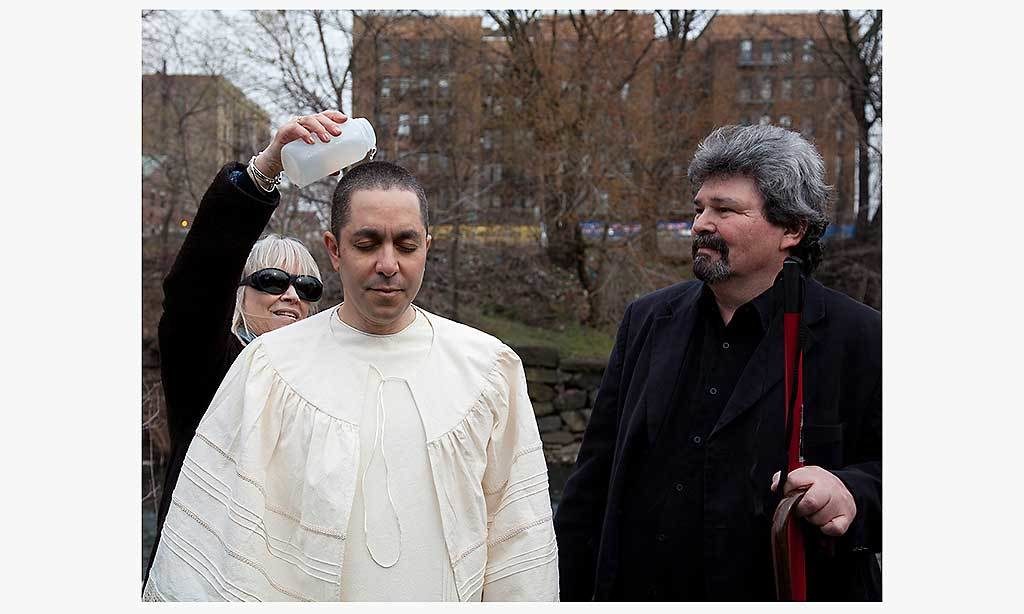
Performance; 2011; Nicolás Dumit Estévez Raful (06, 07); interdisciplinary artist, with William Aguado, Linda Cox, Aida Celeste García Howie, Aisha Rose Howie, Susan Newmark Fleminger, Martha Wilson, and the Bronx. I invited William Aguado and Susan Fleminger to baptize me as a Bronxite with the water from the Bronx River. This baptism is a rite of passage that marks my transition from Lebanese-Dominican to Dominican York (a Dominican who had settled permanently in New York City) and my birth/rebirth as a native son of the Bronx. Ceremony officiated by Martha Wilson. Conceived for Longwood Art Gallery/ Bronx Council on the Arts and presented with collaborating organizations, including Bronx River Alliance, El Museo del Barrio, Banana Kelly High School, Lehman College Art Gallery, and two programs from Phipps Community Development Corporation: Drew Gardens and La Casa de Felicidad, among others. (Alex Villaluz photo)
The Flying Fish
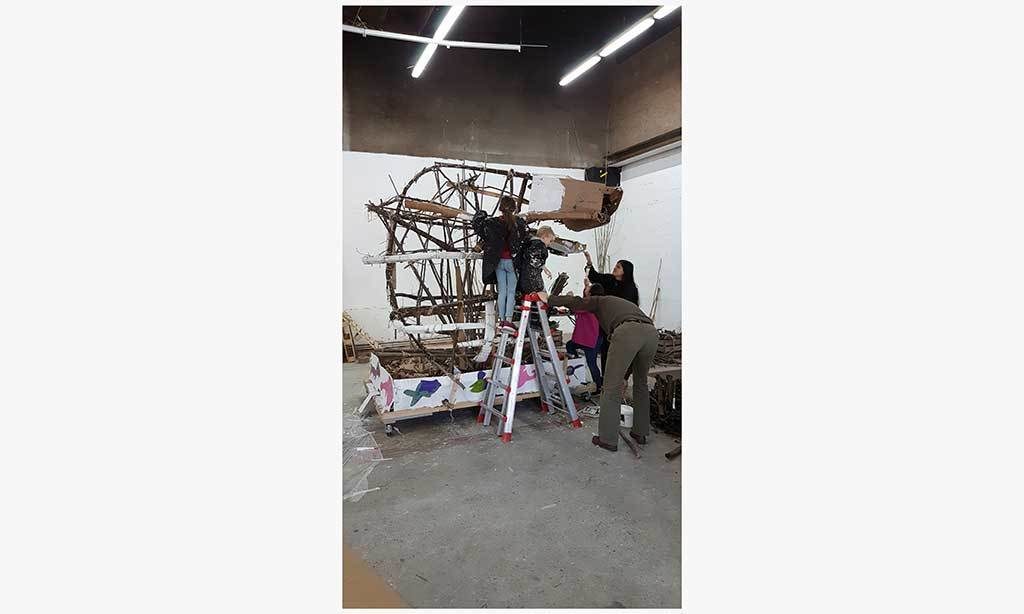
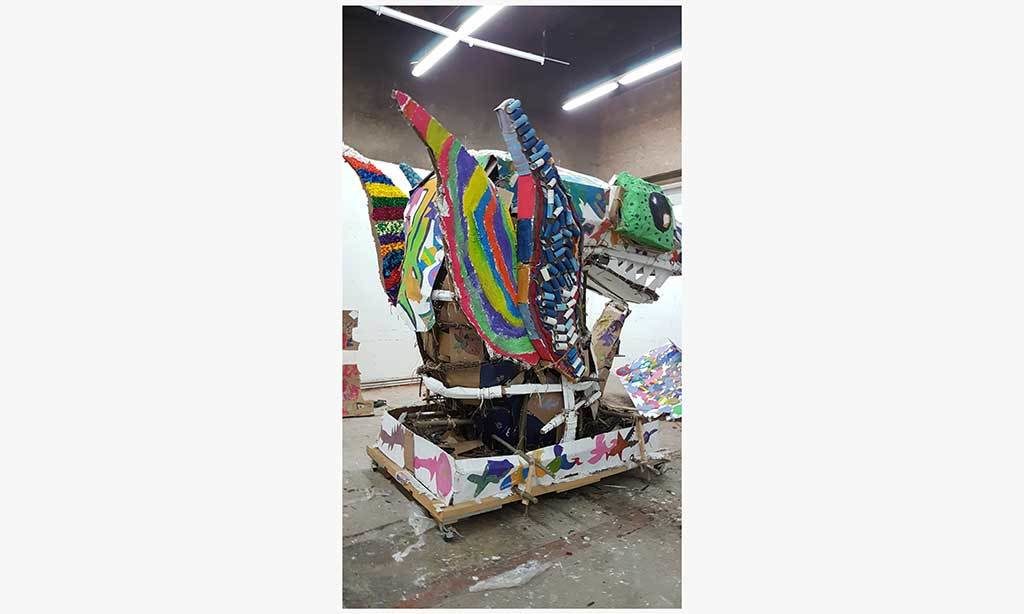
Recycled wood, cardboard, and water based paints; 9 ft. X 9 ft.; 2020; Ngamanya Banda (04), sculptor. The Flying Fish makes the link between the sea and the air like a marine rainbow, mixing warm and cold colors as a reminder of the fragile balance in our environment, and it symbolizes a new impetus toward ecological and climatic awareness for our oceans.
Fall Mist
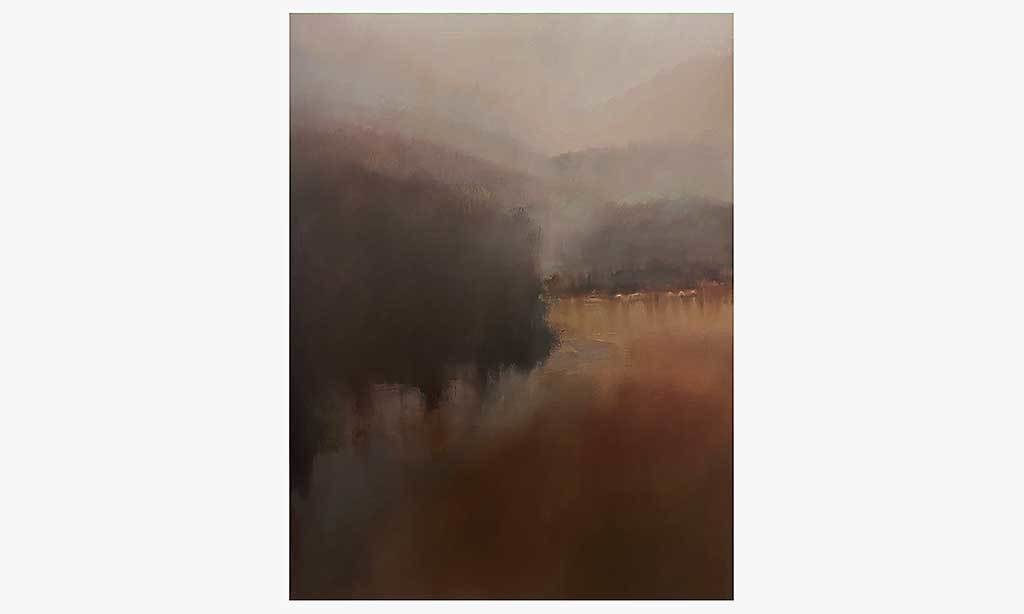
Oil on canvas; 40 in. X 30 in.; 2020; Sylvia Benitez (84, 86), painter. Now that I am semiretired my direction has morphed. I now choose to celebrate nature’s unsullied terrain—the one found where I live. Relatively speaking, it is still unmarred by human footprint. My art no longer carries an overtly political/environmental agenda. That was my earlier 30-year fight. I gave it my all. I received an Adolph and Esther Gottlieb mature artist assistance grant for that work. Since then, I have opted (through my art) to address our world's ongoing wounds by trying to bring beauty/peace/rest into being.
Demeter & Persephone
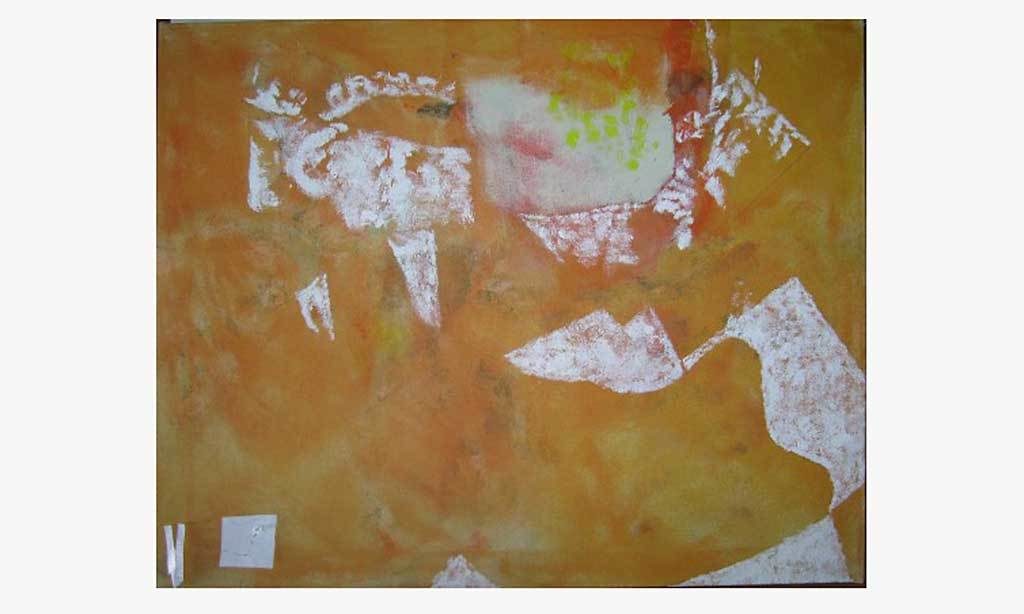
Oil on canvas; 32 in. X 40 in.; 2012; Stephen G. Davis (85), painter.The theme of reaching past life to renewal: Gilgamesh, Frogs/Aristophanes, Bernarda Bryson Shahn, more, is quite compelling; part of life, fascinating, contemplative.
Suppose all the Lions
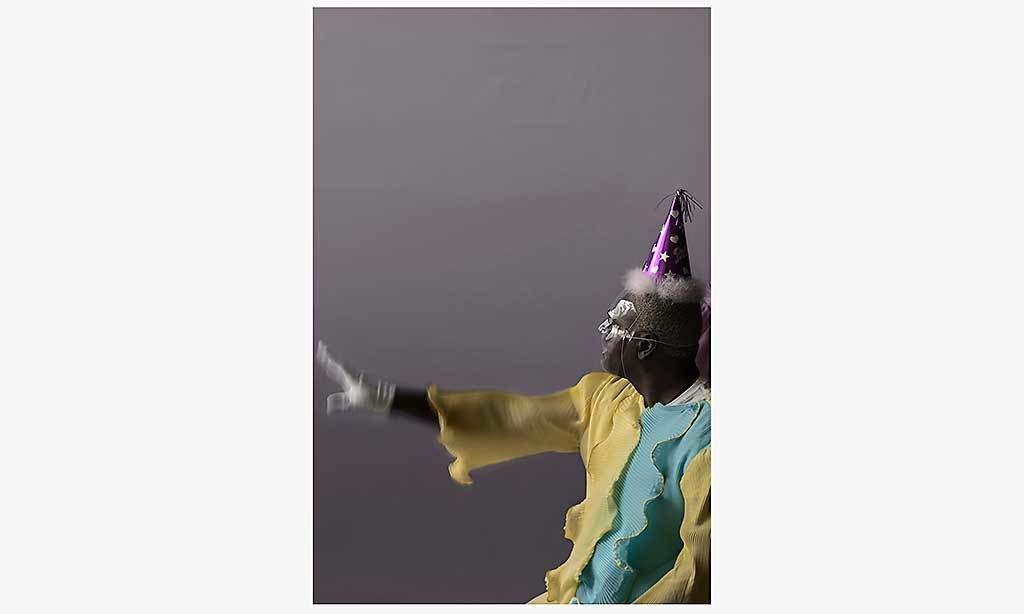
Photographic paper; 60 in. X 40 in.; 2019; Aleya Lehmann Bench (85, 87, 95), photographer. The title comes from the poem "If I Could Tell You" by W.H Auden. I was working in the studio with my friend Dwayne Langston, pictured here, who collaborated with me on posing within something like a theatre set, in costumes I'd made by hand. The picture was featured at Foley Gallery in New York in summer 2019.
Bunny Bomb
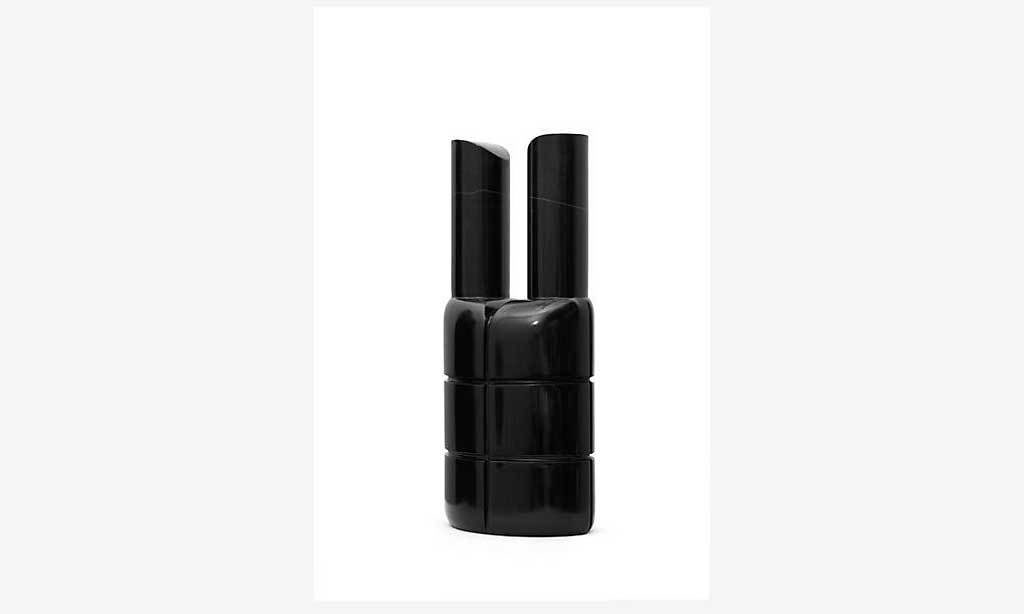
Black marble; 18.5 in. X 7.75 in. X 5.75 in.; 2019; Claire Lieberman (81, 85), sculptor. The piece is part of a series that explores the reverberations of violence in contemporary culture through the lens of games and child’s play. (photo by Jane Huntington)
An Indian from India, Daughters
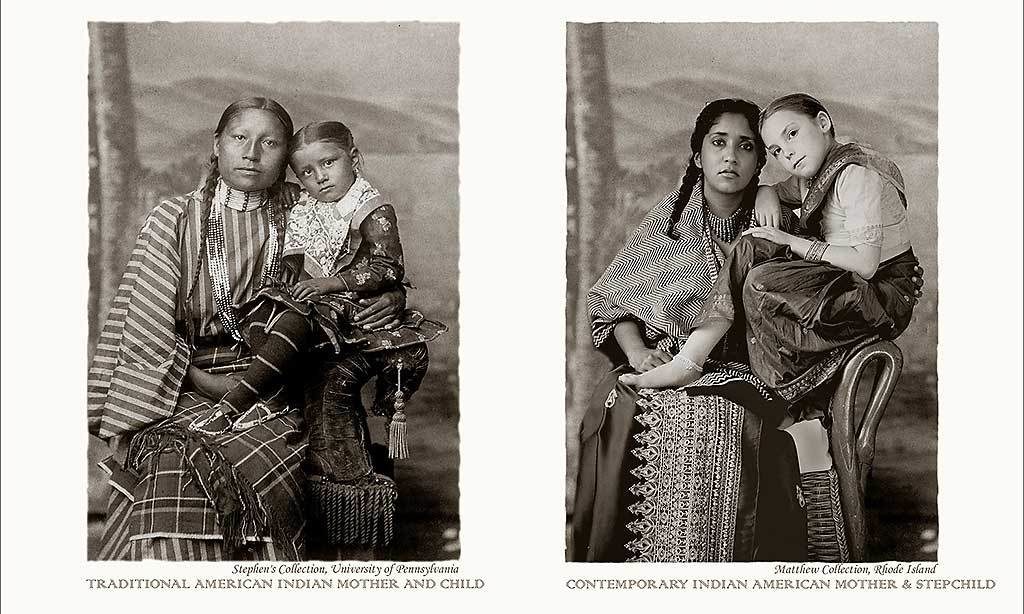
Archival digital print imitating a photo gravure; 12 in. X 16 in.; 2001; Annu Palakunnathu Matthew (03), photographer.
Niñas y Ninos Sanas en un Mundo Pacífico (Healthy Children in a Peaceful World)
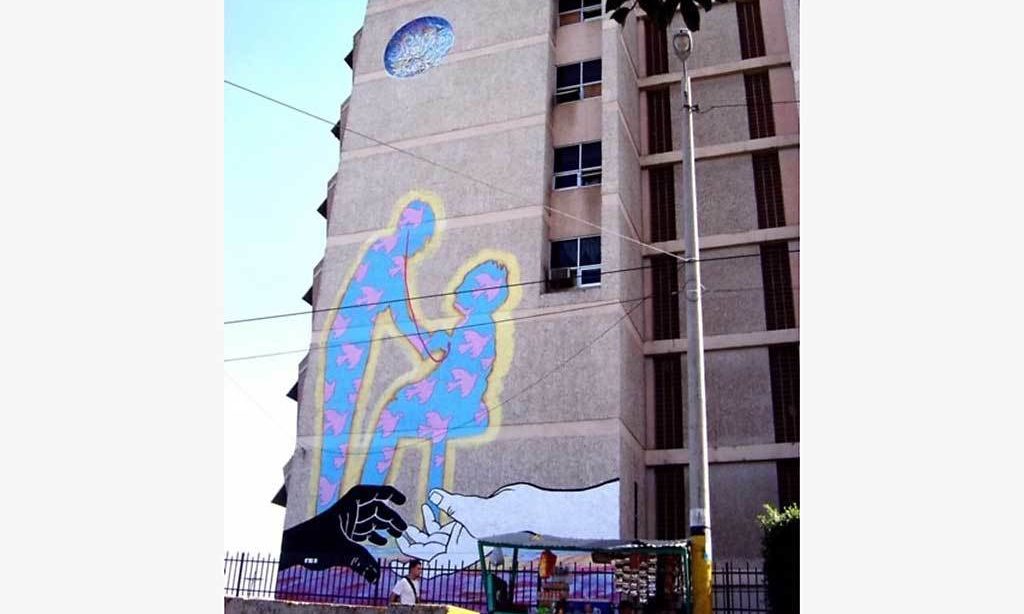
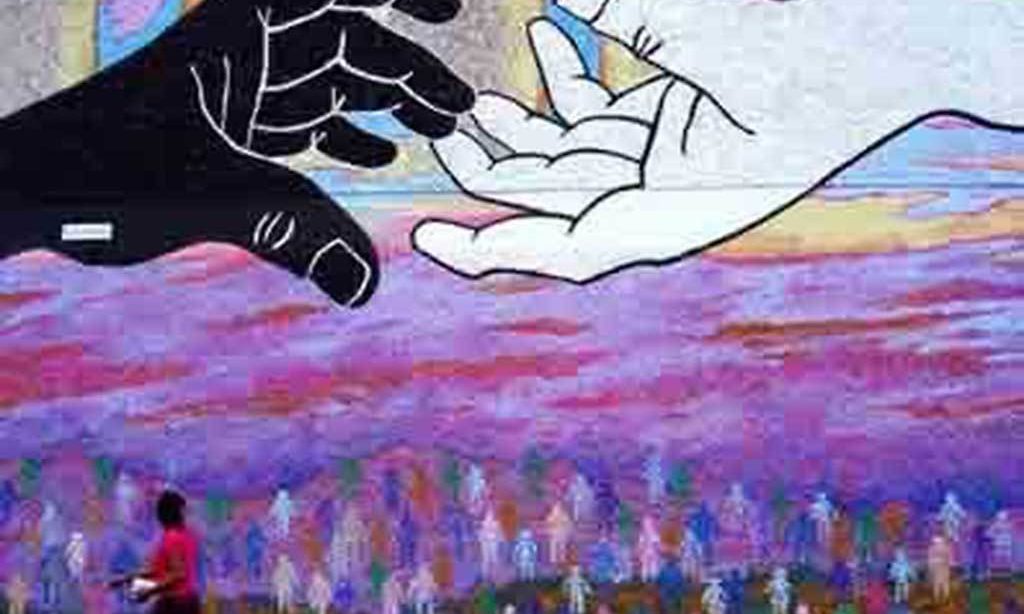
Teaching Hospital Tegucigalpa, Honduras; 2004; Rod Monk (07), painter.
Thirty Pieces (Exhuming Charles Kettering)
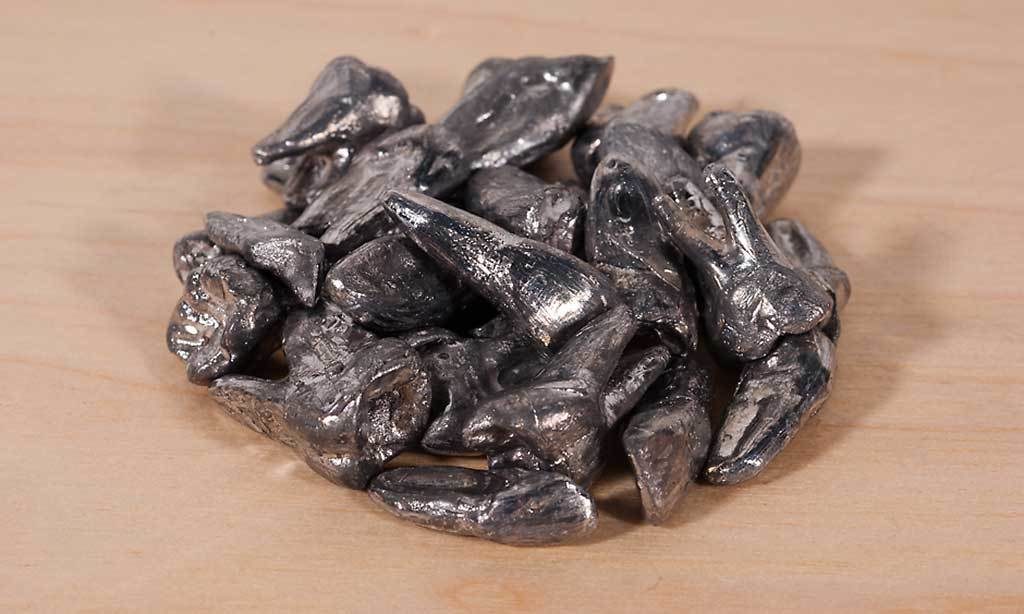
Lead, plexiglas, wood; 8.5 in. X 6.5 in. X 6.5 in; 2012; Christopher McNulty (04), sculptor. This sculpture of 30 lead teeth commemorates the mark left on our blood and bones — and communities of color in particular — by Charles Kettering and other executives at GM during the 60-year period in which tetra-ethyl lead was added to gasoline.
Black Lives Matter
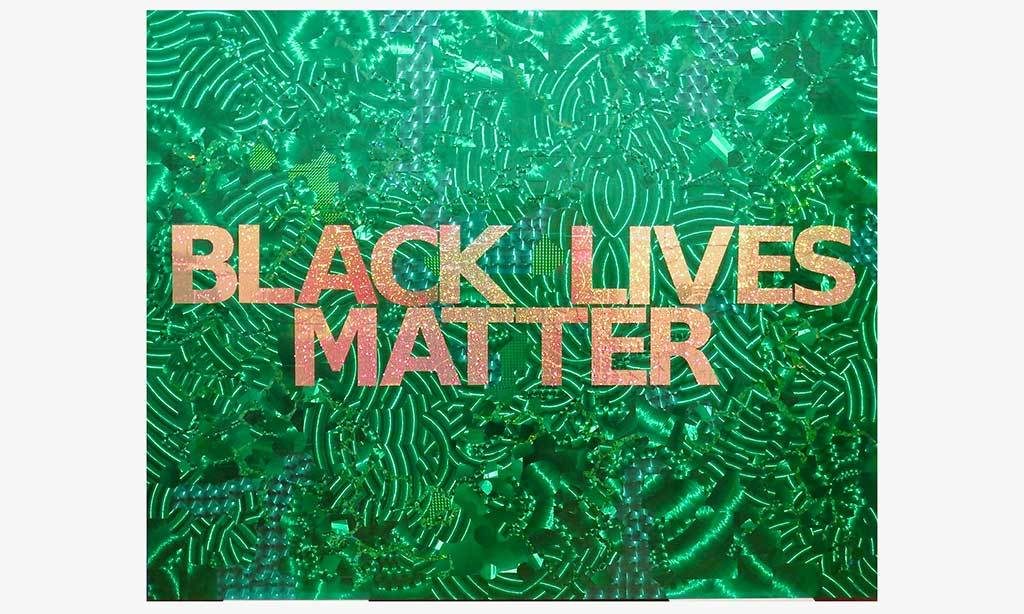
Holographic vinyl collage on alu dibond; 60 in. X 48 in.; 2020; Goran Tomcic (92, 96), mixed media artist.
All the Women I Know
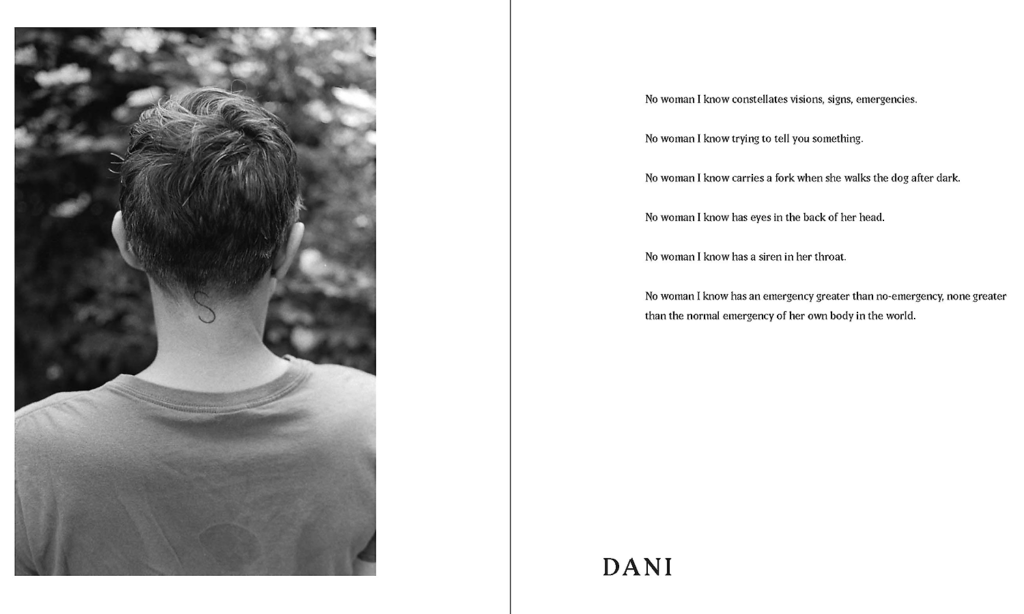
35mm film photograph with text; 5 in. X 7 in.; 2020; Laura Larson (03), photographer, Christine Hume (03), poet.
